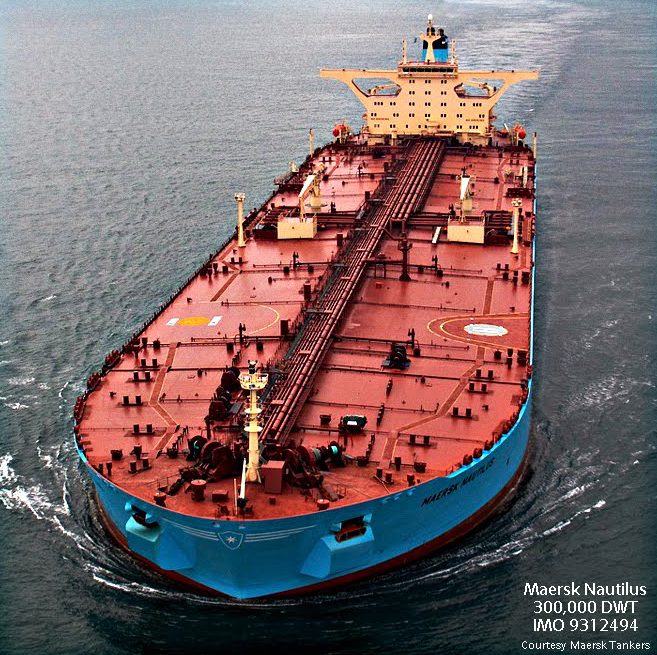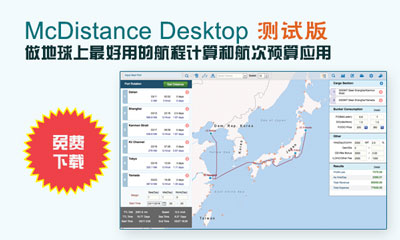
With the holidays behind us, shipping slowly returns to daily routine of moving cargoes (we should never forget what shipping is all about) and everyone having a stake in the industry is trying to figure out where the market is heading in terms of freight rates but also in terms of momentum, expectations and consensus thinking.
In terms of freight rates, the market’s proxy index BDI started the year by dropping anchors showing a 30% drop since the last reporting day of 2013 on Christmas Eve; the capesize index caused most of the drop with about a decline of 48% over the same time. The news is not as bad as it looks (really!) and actually it was to be expected, since charterers are ‘looking hope’ (as they say in auto racing) where cargoes have to be one month or more in advance, the run up in the end of the year was partly seasonal; also, heavy rains in both Brazil and northwestern Australia caused Vale to declare force majeure for iron ore exports over the holidays which pushed shipments into 2014; and, new environmental laws coming into effect in Colombia since the beginning of the new year have halted coal exports from the country. Likewise, the implementation of an export ban of raw commodities from Indonesia has tied up in the country several vessels in laden condition unable to sail.
Tanker rates have also been softening since the end of last year with the exception of Suezmax tankers that have seen their rates jump to more than $70,000 pd due to heavy fog and delays in the Straits of Bosporus. In our opinion, rates will drop more in the very near future before they start recovering going to the celebrations of the Chinese New Year.
In terms of market activity, the year started impressively with two transactions that were finalized during the holidays.
In the dry bulk market, the Scorpio Bulkers (ticker: SALT) has continued their buying spree by announcing the newbuilding orders of twenty-two more vessels (twenty capesize vessels and two kamsarmaxes) for a total consideration of approximately US$ 1.2 billion; all orders have been placed with Chinese yards and a couple of the vessels will start delivering as early as 2015 Q1, but with the majority of the orders delivering in 2016. No breakdown of pricing has been provided, but it seems that capesize vessels were ordered at about $55 million per vessel and the kamsarmaxes at about $36 million per vessel. Based on this transaction, SALT’s fleet mounts to 74 vessels in three assets classes (ultramax, kamsarmax and capesize) with about eight million cumulative deadweight.
Since the company’s inception less than a year ago, the magnitude of the orderbook is impressive and it’s an all-out ‘bet’ by the management and the equity investors for a sustainable market recovery in the dry bulk sector (in addition to the sustainable market recovery of the tanker market where sister company Scorpio Tankers (ticker: STNG) has also a nineteen-vessel strong existing fleet and 65 still one order and total deadweight of 7 million.) Equity investors stand to profit handsomely if the market recovers as modeled, but there have been voices of concern that such extensive overall newbuilding activity could delay a market recovery, ameliorate any possibilities for intense, volatile or even sustainable recovery, and also that the vessel management of such a sizeable fleet may not benefit all parties involved equitably.
In the other headline news of the first week of the year, Maersk Tankers has finally found buyers for their VLCC fleet of fifteen vessels owned by their Maersk Tankers Singapore Pte Ltd subsidiary for a total consideration of US$ 980 million. The AP Møller-Maersk group has been re-aligning their priorities since the new CEO Nils Andersen took over the reins of the group in 2007 (joining from Danish brewery Carlsberg) by divesting businesses and assets that do not strategically fit the group anymore as the emphasis shifts to the containership and ports business; just this week, AP Møller-Maersk agreed to the sale of its stake in supermarket division in Denmark Dansk Supermarked for the amount of US$ 3 billion. Maersk Tankers has been looking into the sale of their VLCC fleet since early 2013, as matter of strategy, and Peter Georgiopoulos and General Maritime with Oaktree as the primary investor have been associated with the potential sale.
Early in 2013, the only way to generate any excitement in the investment community about VLCCs was to put the words ‘VLCC’ and ‘demolition’ in the same sentence; however, the fortunes of the market improved in the second half of 2013 as rates more than tripled from the year average of $16,000 pd by the end of the year, mostly for reasons that we do not exactly deem them to be ‘fundamental’, including the premise that China will be buying excess US shale oil on VLCCs if/when an oil ban export materializes in the US and also the premise that ‘things cannot get any worse in the VLCC market’ and thus a contrarian bet was appropriate. However, the resurrection of the VLCC freight rates caused a few transactions in the secondary market to take place, notably the acquisition of four VLCC tankers by the Navios Group, one vessel by the Capital Group in Greece, and the ordering of seven newbuilding VLCCs from none other than Scorpio Tankers.
These transactions tried to instill some degree of conviction in the market, and mostly managed to establish an updated record of vessel valuations in the VLCC market; sale of modern VLCCs in the secondary market as arm’s-length-transactions has been a dead market in the last four years, so, any valuations were mostly extrapolations and pontifications from broker reports. Pricing of the fleet has been crucial for many reasons as many institutional investors were keen in a ‘contrarian investment’ in the VLCC sector but only at pricing to reflect such probability. On the other hand, despite Maersk’s impeccable name as a vessel manager and operator, buyers were/are extremely selective in terms of vessel specifications and quality when freight rates have been hovering at break-even points; also, it is known that Maersk Tankers owns a few of the most expensive VLCCs in the world at present as they placed their last orders in September 2008 at the very top of the market, and certain market reports had those vessels ordered at US$ 140 million, each, at that time; obviously, exact details cannot be known, but there is a chance that Maersk may negotiated a price discount afterwards given the severity of the financial meltdown post Lehman Brothers and the strength of their signature.
The fifteen vessels acquired by Euronav have an average age of fours years and an average price of about US$ 65 million, which is considered to be a very strong price based on broker report benchmarked prices (about 12% higher than ‘market consensus’.) Obviously, there is a ‘transaction premium’ since this is a transformative transaction for Euronav with a pre-acquisition fleet of 35 vessels (only 12 of which are VLCCs/ULCCs) and quite a few of the vessels were sisterships and coming from a ‘good stable’. Also, a ‘transaction premium’ had to address the sellers’ relatively high cost basis and any accounting issues. The vessels were:
MT MAERSK NAUTILUS, MT MAERSK NAVARIN, MT MAERSK NEPTUNE, MT MAERSK NUCLEUS, MT MAERSK NECTAR, MT MAERSK NAUTICA, MT MAERSK NOBLE and MT MAERSK NEWTON” (307,500 DWT, 2006-2009 built at Dalian Shipbuilding), MT MAERSK ILMA, MT MAERSK ISABELLA and MT MAERSK INGRID (318,500 DWT, 2012, Hyundai Heavy Industries), and MT MAERSK SANDRA, MT MAERSK SONIA, MT MAERSK SONIA and MT MAERSK SIMONE”(323,000 DWT, 2011 & 2012 built at STX Shipbuilding.)
Euronav will finance the acquisition with an immediate capital increase of US$ 50 million and a total capital increase of US$ 300 million (to be authorized by the Board) issuing additional shares at about EUR 6.70/share, US$ 500 million debt facility and US$ 235 mezzanine financing; the following funds BHR Capital LLC, Glendon Capital Management LP, GoldenTree Asset Management LP, Solus Alternative Asset Management LP, and York Capital Management Global have committed to the immediate and future capital increases.
There are couple of observations from the transaction: buyers expect that the VLCC market will eventually improve substantially and that the acquisition will be accretive to the investors; Euronav operates the Tankers International pool that has access to cargoes and COAs; however, the company is still an independent shipowner whose success and financial performance will be highly correlated to future freight rates and market conditions. A bigger fleet post-acquisition offers economies of scale and operating efficiencies, but efficiencies will get so much mileage out of any acquisition; also, Euronav will be hopeful to use this opportunity to have a secondary listing on the exchanges in the US and springboard their access to the deeper draft capital markets. The ‘wisdom’ of this transaction will have to be evaluated in the future and will be highly correlated to market conditions.
The second observation is that both strong contenders for the acquisition, Euronav and General Maritime, were dependent on the participation of institutional investors and private equity funds. It seems that one of these buyers got a better reception this time from the investment community, but again, it has to be noted, none of the institutional investors in the Euronav acquisition have institutional knowledge of the shipping markets. As a corollary to this observation is the conspicuous absence of certain potential buyers: there were no oil companies or traders or refiners or any type of companies that have great access to cargoes that would like to hedge their freight costs. For example, wouldn’t a Chinese oil company or a Chinese shipowner affiliated with crude oil imports to China be a strategic buyer?
Why not? The price of the deal was not right or do they have better plans? Also, one cannot talk about VLCCs without thinking of present market ‘shipping king’ John Fredriksen and his VLCC companies Frontline and Frontline 2012; with the Norwegian over-the-counter market super hot last year, probably it would have taken a quick stroll for ‘Big John’ to round up a billion clams to get the deal wrapped in very short order. Fredriksen is not shy of acquisitions, whether for assets or companies, and of his existing fleet of about 240 vessels (under different corporate entities and market segments) with about ninety-six (96) vessels on order, lacks any newbuildings in the VLCC market, not even as a specimen. And, as a matter of track record, VLCCs operated under the Fredriksen umbrella (Frontline and Frontline 2012) have been known to constantly outperform the Euronav fleet, on certain quarters by a long league of US$5,000 – US$10,000 pd per vessel.
One can observe that there have been no ‘smart money’ interest for this transaction, at least at the prices that took place.
Quo vadis?



